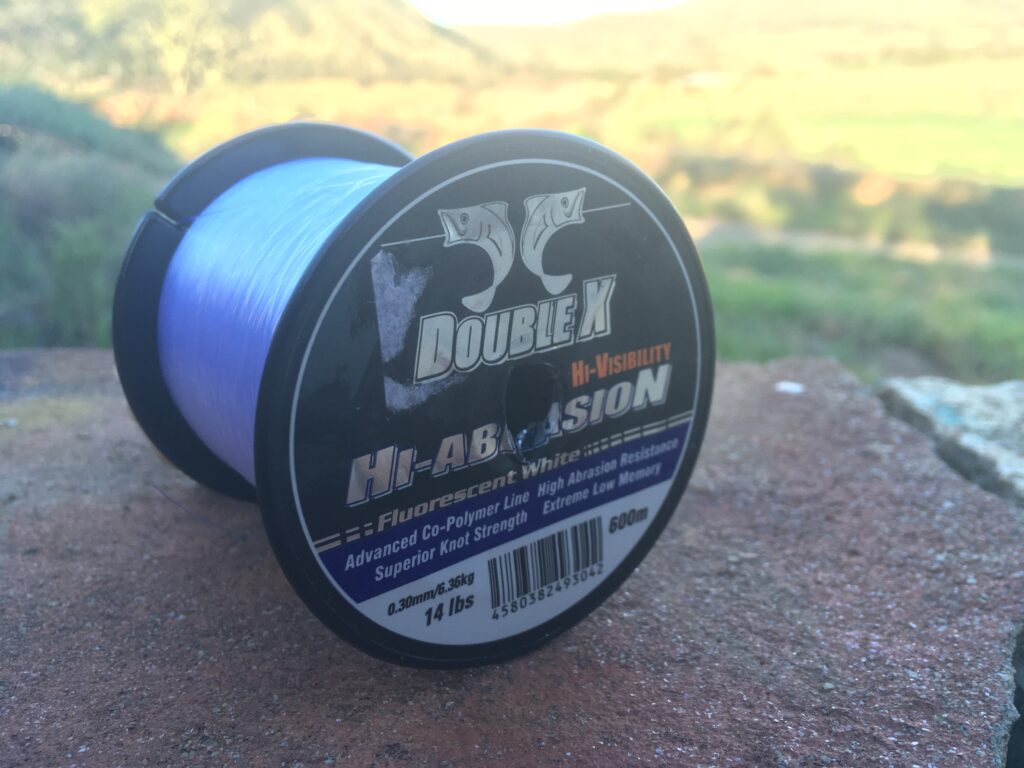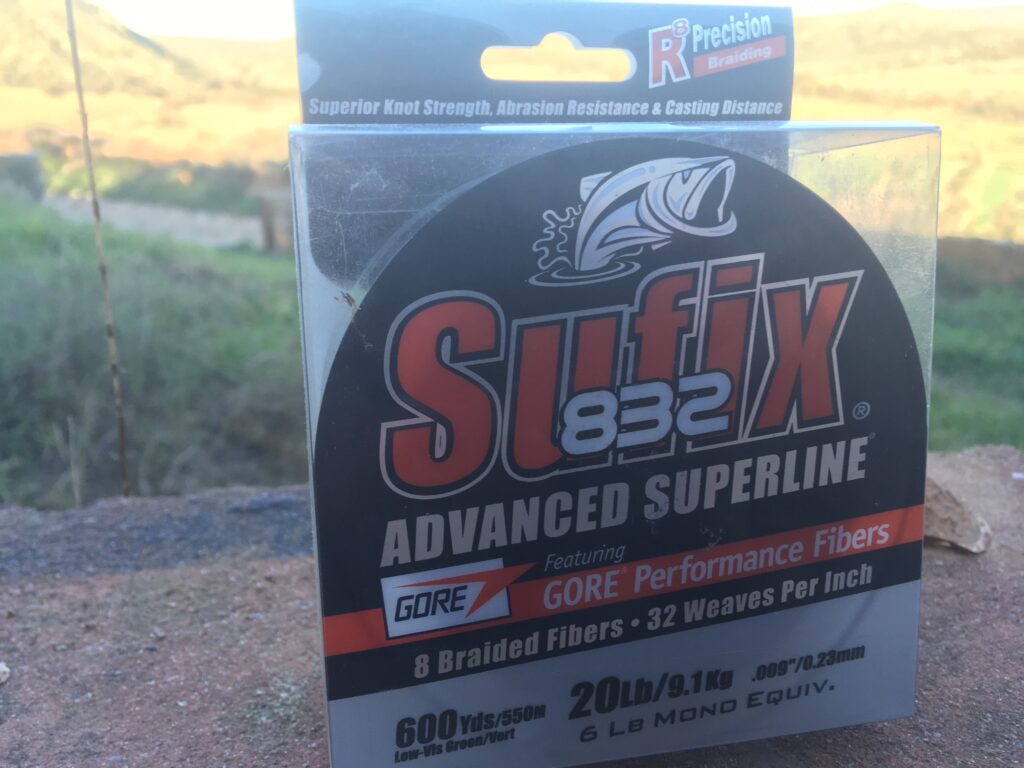Fishing line is an important part of any fisherman’s tackle box. Without it you are not really fishing. There are 4 main types of fishing line, each with their own properties. In this blog post I will teach you the differences between line and what line is best for your needs.
Before we can dive farther into the main types of line, we need to cover the terminology that we are going to use for all the types of line. Using this we can understand that not all lines are made equal and why some of their qualities might be better or worse for the type of fishing you’re doing.
Stretch is how far your line extends when it’s under pressure, like when you hook a fish. There is pros and cons this this. The pros of stretchy line is that if you have a big fish it can absorb a lot tension on the line, meaning it is less likely to break. The cons are that it is less sensitive as that shock does not get transferred up to the rod. It can be hard to set the hook as the line stretches instead of driving the hook into the fish’s mouth. This can be especially punishing against species with hard and tough mouths.
This is how well fishing line resists being scratched and cut up by cover and rocks. Good quality lines tend to have better abrasion resistance along with thicker lines.
Some lines sink or float. For some presentations this is important and its good for you to understand the buoyancy of the line you are using.
Visibility is how well fish can see your line underwater. Fish that see your line will often become spooked. In some cases, I will camouflage my line by choosing a line with color that matches the water or using a see-through line.
Memory is how well line holds it shape. For some presentations this can be a bad thing as it tends to curl up. Lines with high memory tend to be harder to cast and the line will often knot up. If possible, you want to avoid line with high memory.
Breaking strain is the pressure that it takes to break your fishing line. Most manufacturers will have the required pressure required to break the line on the box. This is normally shown on the box as pounds or kilograms. The strength of your line is important to know when you are fishing because you don’t want to use too light a line for the job or a line to strong. A stronger line tends to be less sensitive and, in my opinion, much less fun to fish with.
Thicker lines tend to handle rough handling a lot better than thinner lines, but they come with some disadvantages. Firstly, the thinner the line the further you can cast with it. This is because of aero dynamics; thicker line will always have more air drag. This can sometimes be an advantage as thinner lines can make the dreaded wind knot if casted incorrectly.
Monofilament line is the most common type of fishing line in the world. This is because its cheap, is proven it can catch many species and is quite easy to work with. This is the line that most beginners start with and is good for building confidence when you start fishing. The main draw of Mono is that the line is very versatile. You can use it on most setup and have a great day on the water.
One of the main draws of mono as a new fisherman is that it holds a knot very well. For me it was the hardest thing getting use to when changing to new lines. If I had to say the worst thing about mono is its high stretch. Though this can be helpful when fighting the fish, sometimes you don’t even feel the bite and I have lost many fish due to the line stretching when i set the hook. Something to be aware of is the mono line degrades very easily under UV light so be prepared to replace it often.

Copolymer is very much an improvement over mono in many ways. Were as mono is normally nylon formed into one strand, copolymer is 2 or more materials formed into a single strand. This gives it the properties of Mono line but removes a lot of the properties that make mono unfavorable to fishermen. The most important difference is that copolymer has a much lower stretch value then Mono and even better memory. Another is that most copolymers tend to sink, for some presentations this is something you need to be aware of. Overall copolymer is an upgrade in every way except one, price. You are going to pay for the quality of copolymer, but if you are willing to spend the cash you will not be disappointed.

Fluorocarbon looks very much like mono but behaves very differently. This is because it is made from a denser material and has different properties. Firstly, it sinks much faster than mono, making it great for fishing deep. It a very stiff line that likes to hold memory, this makes it horrible to work with. My first experience when using Fluorocarbon was the whole spool of line uncoiling like a spring off my reel. You can reduce the memory using line conditioner or buying very expensive Fluorocarbon as they send to be more supple.
Another problem when using Fluorocarbon as a beginner is the knots you tie needs to be specific and you need to be very careful every time you tie it. My preferred knot is a uni knot and I take care to make sure my knot is wet when tying as that reduces friction which is the cause for Fluorocarbon failing. Luckily, you can see if the knot you made is not good enough as the line will fray, and you can see it with the naked eye. The last major problem you get is the price, being considerably more expensive then mono and copolymer.
For all the problems fluorocarbon has it has some major upsides. Firstly, it practically invisible to fish. This is important for species that are line shy like trout. It has low stretch meaning it is extremely sensitive and you will feel the smallest bite. The low stretch means it easier to set the hook and combined with it sensitivity makes it ideal fishing small weightless presentations. The line is also rather durable, with a great abrasion and UV resistance if you look after it can last you a long time.

The last type of line is braid. Compared to the other it stands out due to its construction. Braid is made by weaving strands of fibers to make a fishing line that closer to thin rope then convention fishing line. This makes a fishing line that has zero stretch, memory, is super thin and is incredibly strong. Pound for pound nothing competes with braid for raw strength. This strength means you can get away with incredibly thin line that is great for casting, and you will find you cast much further than you would with other line.
The line itself is tough as nails able to handle rough handling and UV almost unscathed. It doesn’t handle sharp rocks well though so fish a different line is you see any. If you look after it braid will last the longest out of all your line, I still using it for 5 years and I think I can get another 5 out it before I have to replace it which is great because braid it the most expensive of all four lines.
All these strengths have drawbacks though. Firstly because of its thinness braid tends to tie its self-up if you cast in incorrectly or on windy days. Always check that your gear can handle braid, if not the braid will damage gear because it so strong and thin. Another disadvantage of the thinness of braid is that if you get backlashes, it normally impossible to fix and it can be disheartening to throw away large portions of expensive braid. the low stretch in braid makes tying a knot in it difficult. you can overcome this by tying the right types of knots. I use a Palomar for all my braid knots. Due to its construction braid is opaque and can spook fish very easily. I overcome this by using braid that the color of the water or using it in stained or dirty water so the fish cant see it.

I hope that you now have a better understanding of the types of fishing line. Always remember that there is no best fishing line and each line has there pros and cons. As a beginner you will probably develop a personal preference and that is fine. Just enjoy your self and ease into it slowly, especially for the harder to use lines like fluorocarbon and braid.